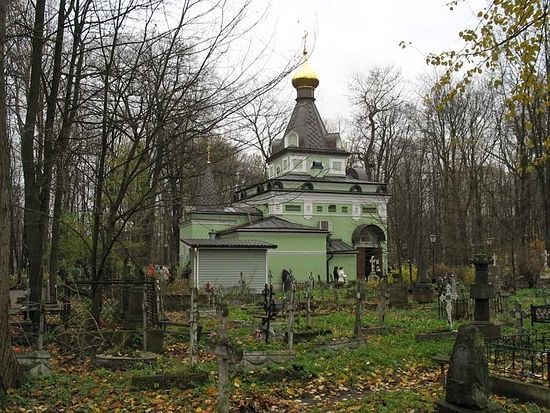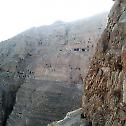Science
The Three Hierarchs: Saint Basil the Great, Saint Gregory the Theologian, and Saint John Chrysostom
11. February 2017 - 14:37 Each of these saints has his own feast day: St. Basil the Great, January 1; St. Gregory the Theologian, January 25; and St. John Chrysostom, January 27. This combined feast day, January 30, was instituted in the eleventh century during the reign of Emperor Alexius Comnenus. Once, a debate arose among the people concerning who among the three was the greatest. Some extolled Basil because of his purity and courage; others extolled Gregory for his unequaled depth and lofty mind in theology; still others extolled Chrysostom because of his eloquence and clarity in expounding the Faith. Thus some were called Basilians, others Gregorians, and the third were called Johannites. This debate was settled by divine providence, to the benefit of the Church and to the even greater glory of the three saints. Bishop John of Euchaita (June 14) had a vision in a dream: At first all three of these saints appeared to him separately in great glory and indescribable beauty, and after that, all three appeared together. They said to him: “As you see, we are one in God and there is nothing contradictory in us; neither is there a first or a second among us.” The saints also advised Bishop John to write a common service for them and to order a common feast day of celebration. Following this wonderful vision, the debate was settled in this manner: January 30 would be designated as the common feast of these three hierarchs. The Greeks consider this feast not only an ecclesiastical feast, but also their greatest national and school holiday.
Each of these saints has his own feast day: St. Basil the Great, January 1; St. Gregory the Theologian, January 25; and St. John Chrysostom, January 27. This combined feast day, January 30, was instituted in the eleventh century during the reign of Emperor Alexius Comnenus. Once, a debate arose among the people concerning who among the three was the greatest. Some extolled Basil because of his purity and courage; others extolled Gregory for his unequaled depth and lofty mind in theology; still others extolled Chrysostom because of his eloquence and clarity in expounding the Faith. Thus some were called Basilians, others Gregorians, and the third were called Johannites. This debate was settled by divine providence, to the benefit of the Church and to the even greater glory of the three saints. Bishop John of Euchaita (June 14) had a vision in a dream: At first all three of these saints appeared to him separately in great glory and indescribable beauty, and after that, all three appeared together. They said to him: “As you see, we are one in God and there is nothing contradictory in us; neither is there a first or a second among us.” The saints also advised Bishop John to write a common service for them and to order a common feast day of celebration. Following this wonderful vision, the debate was settled in this manner: January 30 would be designated as the common feast of these three hierarchs. The Greeks consider this feast not only an ecclesiastical feast, but also their greatest national and school holiday.
Weekly Diocesan Bulletin - Sunday, February 12, 2017
11. February 2017 - 14:29 Sunday of the Prodigal Son; The Three Holy Hierarchs: Saints Basil the Great, Gregory the Theologian, and John Chrysostom
Sunday of the Prodigal Son; The Three Holy Hierarchs: Saints Basil the Great, Gregory the Theologian, and John Chrysostom
RESURRECTIONAL TROPARION - TONE ONE: When the stone had been sealed by the Jews; while the soldiers were guarding Thy most pure Body; Thou didst arise on the third day, O Savior, granting life to the world. The powers of heaven therefore cried to Thee, O Giver of Life: Glory to Thy Resurrection, O Christ! Glory to Thy Kingdom! Glory to Thy dispensation, O Thou who lovest mankind.
We’ve Come to Matushka… Remembering Blessed Xenia
10. February 2017 - 10:45 The Smolensk cemetery in St. Petersburg is like a sleeping child—profound peace and purity wafts through its alleys. What don’t we come to Blessed Xenia for! To cry over our woes, to pray for success—and each person is locked inside himself, his troubles or joys… In his prayer. And this is understandable; it would be terrible to come to St. Xenia just to have a look at the people. But for the first time I have come to the Blessed One not for the sake of prayer but for the sake of those who are praying. I look around and peer at them.
The Smolensk cemetery in St. Petersburg is like a sleeping child—profound peace and purity wafts through its alleys. What don’t we come to Blessed Xenia for! To cry over our woes, to pray for success—and each person is locked inside himself, his troubles or joys… In his prayer. And this is understandable; it would be terrible to come to St. Xenia just to have a look at the people. But for the first time I have come to the Blessed One not for the sake of prayer but for the sake of those who are praying. I look around and peer at them.
The Gratitude of the Publican
6. February 2017 - 16:51 In the Name of the Father, the Son, and the Holy Spirit.
In the Name of the Father, the Son, and the Holy Spirit.
How short, and how well known today’s parable, and yet, how intense its message, how challenging...
The Sacred Sites of Jericho
25. January 2017 - 16:55Towards the Jordan
The ancient Biblical region with its history, place-names, architecture, art, and traditions attracts the attention of many people. Believers have a special attitude towards it: Here the Bible comes back to life and the desert wind blows away millennial boundaries. Though my trip was planned in advance, it took place not immediately but coincided with my birthday, as a gift from above. The itinerary was formed of opportunities and wishes, and one of the main wishes was to immerse myself in the waters of the Jordan River. The bathing place is located seven kilometers (c. 4.35 miles) from the town of Jericho. And, as it turned out, the town itself is quite interesting and likes Russian speech.
Sermon on the Epiphany by St John – Archbishop of Shanghai and San Francisco the Miracle-Worker
21. January 2017 - 11:21![]() As we celebrate the Epiphany, we remember how God revealed himself as the Trinity, that Jesus appeared to the people as Christ. Where did Christ appear Hos did He begin His mission? Did He enter a great city and reveal Himself in His glory? Did He ascend a great mountain as many thousands of people beheld Him from below, wondering at the miracle? No! Christ went into the wilderness, to the Jordan River, where John was baptizing the people. John preached repentance, and called upon sinners, in a sign of repentance, to be baptized in the Jordan. And it was as a sinner that Christ came and asked for baptism. Yet He had no sin. John was afraid: “I have need to be baptized of thee, and comest thou to me? And Jesus answering said unto him, suffer it to be so now: for thus it becometh us to fulfil all righteousness” (Matthew 3:15). Adam sinned through pride, he wished to elevate himself, to become like God. But Christ cam to fulfill the truth of God, to correct Adam’s pride through humility. Christ entered the water and received baptism from His servant. Trembling, John placed his hand upon his God and Master, and Christ humbly bowed His head. Christ’s humility opened up the heavens, and the voice of God the Father boomed forth: “This is my beloved Son, in whom I am well pleased” (Matthew 3:17). This is My Son, Who humbled Himself in order to fulfill My will, My true Son, Who humbles Himself in order to elevate mankind. Christ’s meekness opened the heavens and revealed to mankind the Trinitarian nature of God.
As we celebrate the Epiphany, we remember how God revealed himself as the Trinity, that Jesus appeared to the people as Christ. Where did Christ appear Hos did He begin His mission? Did He enter a great city and reveal Himself in His glory? Did He ascend a great mountain as many thousands of people beheld Him from below, wondering at the miracle? No! Christ went into the wilderness, to the Jordan River, where John was baptizing the people. John preached repentance, and called upon sinners, in a sign of repentance, to be baptized in the Jordan. And it was as a sinner that Christ came and asked for baptism. Yet He had no sin. John was afraid: “I have need to be baptized of thee, and comest thou to me? And Jesus answering said unto him, suffer it to be so now: for thus it becometh us to fulfil all righteousness” (Matthew 3:15). Adam sinned through pride, he wished to elevate himself, to become like God. But Christ cam to fulfill the truth of God, to correct Adam’s pride through humility. Christ entered the water and received baptism from His servant. Trembling, John placed his hand upon his God and Master, and Christ humbly bowed His head. Christ’s humility opened up the heavens, and the voice of God the Father boomed forth: “This is my beloved Son, in whom I am well pleased” (Matthew 3:17). This is My Son, Who humbled Himself in order to fulfill My will, My true Son, Who humbles Himself in order to elevate mankind. Christ’s meekness opened the heavens and revealed to mankind the Trinitarian nature of God.





